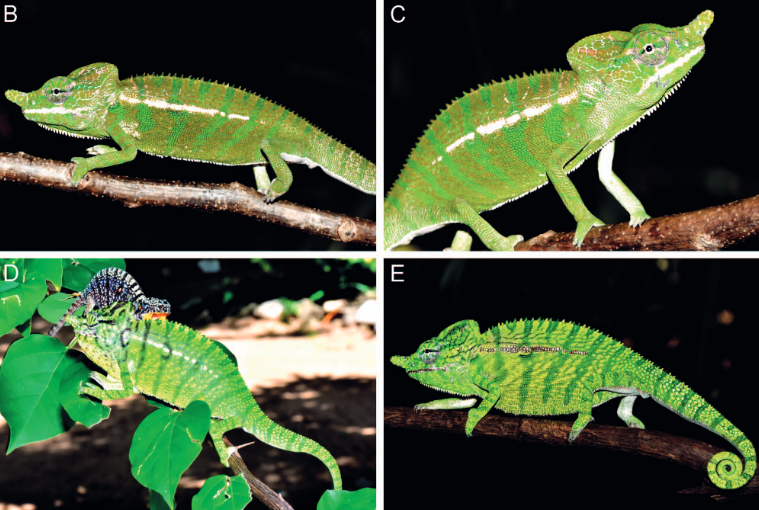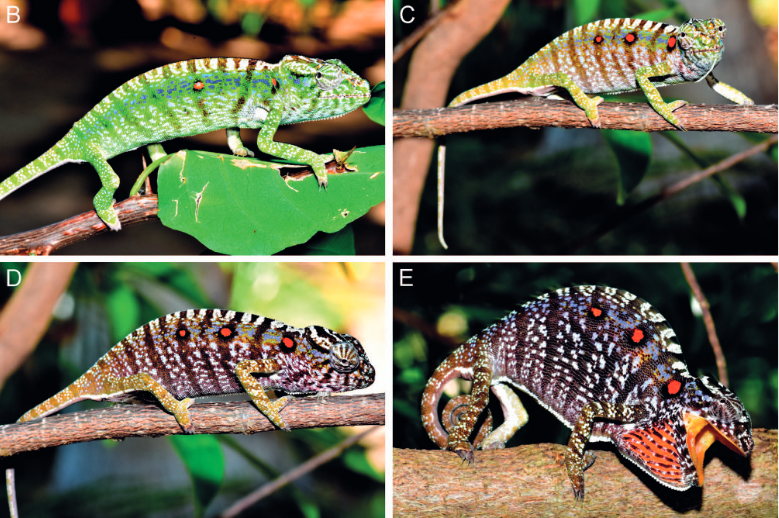Voeltzkow's chameleon, or the Furcifer voeltzkowi, was thought to be extinct for at least 100 years. Conservationists have rediscovered them in Madagascar, where the species are endemic. German researchers recently published their findings in the German Journal of Herpetology: Salamandra.
Earth is on the verge of its sixth mass extinction or the Anthropocene extinction due to climate change, deforestation, pollution, and other factors. In the past 500 years, over 800 species have been classified extinct by the International Union for Conservation of Nature Red List, including the Voeltzkow's chameleon.

Don Church from the Global Wildlife Conservation (GWC) said that the species "adds color and beauty to the planet," reminding humanity that an adventure "can rekindle hope even for species we haven't seen" in over a century. Aside from learning more about Voeltzkow's chameleon, scientists can develop ways to save them from extinction.
Search for Lost Species Program
The team's expedition was part of the Search for Lost Species program, bringing together over 100 international scientists to search for 1,200 lost species. Voeltzkow's chameleon is part of the 25 "most wanted" species globally that are global flagships for conservation shared the GWC. Moreover, the organization aims to expand the habitats and ecosystem of these elusive species.
Not much is known about Voeltzkow's chameleon, aside from being discovered by Oskar Boettger in the 1890s. The species was named after the German biologist Alfred Voelzkow. It's close relative, the Labord's chameleon, is known to have a short life cycle of a few months.
Read Also: Rare Javan Rhino Calves Sighted in Indonesia's Ujung Kulon National Park
Rediscovering the Voeltzkow's Chameleon
Days before the team's expedition was going to end in Madagascar; a guide spotted one chameleon. The team soon found three males and 15 females in total.
The first known female F. voeltzkowi had a total length of 5.9 inches from snout to tail. Males were slightly larger at 6.5 inches long with a light green color and developed dark green stripes when triggered.

On the other hand, females were green with dark green stripes and red dots. When stressed, the dark green stripes change to black and white while purple streaks cover the sides. Their throats can also flash an orange color when they are stressed or during pregnancy.
They were spotted at the Madame Chabaud hotel in a small town. The owner informed the team that the chameleons are abundant during the wet season from January to March. However, the species remain endangered since they occupy a small region fragmented from fires and deforestation.
The team had also hoped to find the F. Monoceros during their expedition, another species endemic to Madagascar, characterized by its long snout. "Future comparative studies on the life history of F. voeltzkowi might be an excellent model system to increase our knowledge on the evolution of extreme life histories and their constraints in tetrapods," wrote the authors.
Read Also: Critically Endangered Hainan Gibbon Uses Man-Made Rope Bridge for the First Time
Check out more news and information on Endangered Species on Science Times.












